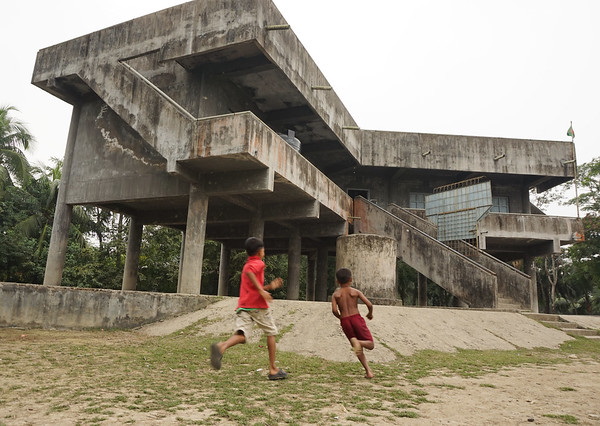Powerful cyclones are a fact of life along the coast of the Bay of Bengal but sturdy cyclone shelters have saved lives time after time, storm after storm.
Making (For) High Ground
Cyclones are a seasonal menace to countries bordering on the shores of the Indian Ocean but if the name’s unfamiliar, these cyclonic storms are not. Blame meteorological methodology for dubbing Indian Ocean storms “cyclones”, western Pacific storms “typhoons”, and Atlantic Ocean systems “hurricanes”. While cyclones can and do strike anywhere from East Africa to Western Australia, cyclone shelters (such as the one above, photographed by Flickr member Climate Centre) are mainly found in India and Bangladesh.
High Rise, Low Cost
Cyclone shelters are remarkably simple structures with few if any amenities – plumbing, electrical wiring, etc. – but the real “low cost” can be measured in lives. This grungy but fully functional cyclone shelter in Khulna, southern Bangladesh, was photographed by Flickr member Canadian Foodgrains Bank in late 2015.
No Phailin Grade
After the 1999 Odisha Cyclone took the lives of approximately 10,400 people, the government of India embarked upon a frenzied campaign to build cyclone shelters (as well as fortifying existing concrete buildings such as schools) in the region. Their efforts paid off on October 11th of 2013 when Cyclone Phailin, the most powerful storm to make landfall in the region since 1999, resulted in only 45 confirmed fatalities. Flickr member EU Civil Protection and Humanitarian Aid snapped one of the new cyclone shelters just after the storm passed on October 13th of 2013.
Looking for a sustainable, eco-friendly building material? Check out Brownstone: Biosolid Boosting Makes Bricks Better!
